PDF sewing patterns are great for a number of reasons, but one thing’s for sure: they don’t fold up as neatly as those printed tissue patterns. Today we’re going to be sharing our methods of storing our PDF sewing patterns.

We love PDF patterns for the instant gratification they provide—you can get an idea for a garment you want to make, buy the pattern, print it out and instantly start working on it. PDF patterns also allow you to print again if your size changes and there’s no tracing involved. (New to using PDF patterns? Check out our guide for beginners.)
One thing you’ll notice once you use PDF patterns for some time is that they can take up a lot of space. They take up practically no space at all when they’re on your computer, but as soon as you print them out and assemble them, they can be rather bulky. It’s easy to toss them into a big pile when you’re done with your project and think that you’ll be able to find them again later, but that approach doesn’t always work. If you’re looking for a better way to store your PDF patterns, you’ve come to the right place!
When we as a team started discussing this blog post, we quickly noticed that we have different methods for storing our patterns. So we thought it would be helpful to show you each of our approaches, and then at the end we have some other storage solutions as well. If you have a method that works well for you, we want to hear about it! Feel free to chime in with your method in the comments.
How Jenny Stores Her Patterns
These days, Jenny’s not doing a ton of personal sewing, but when she’s deep in pattern development for Cashmerette, there are a lot of pattern pieces hanging around. The method we use for storing pattern drafts is the one she used back when her sewing space was entirely at home.
Jenny’s method is to punch a hole through all of the pieces of a pattern and then hang it on a clothes rack using a pattern hook. The patterns hang together nicely and it’s easy to flip through them as you would flip through clothes on a rack. You can organize them into categories by garment (dresses, tops, etc.) or by pattern designer—whatever system makes the most sense to you.
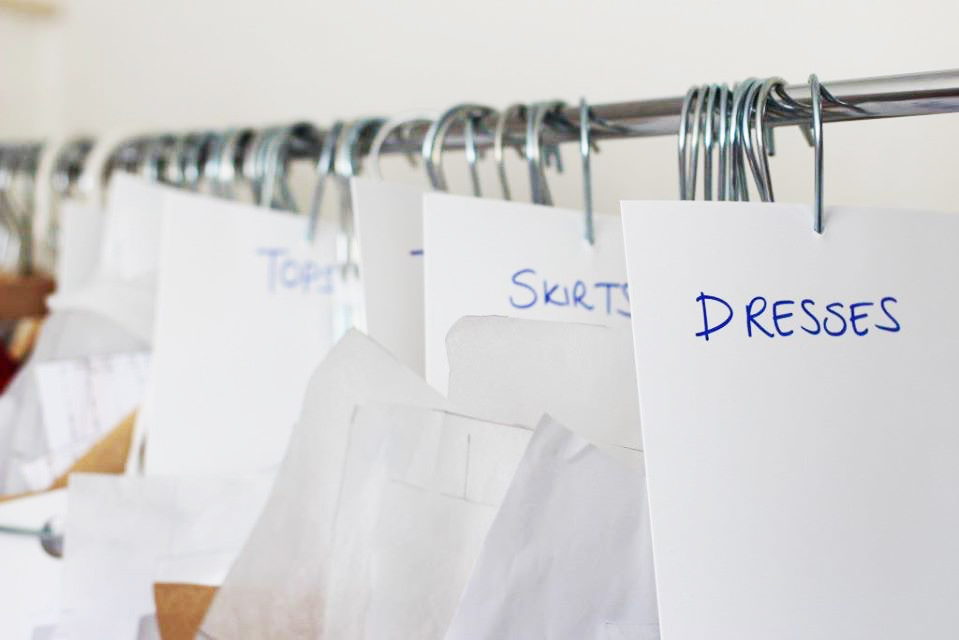
We have a big hole puncher in the studio that we use for this—in punches a nice large hole through several sheets of paper, although it doesn’t like tissue paper quite so much.
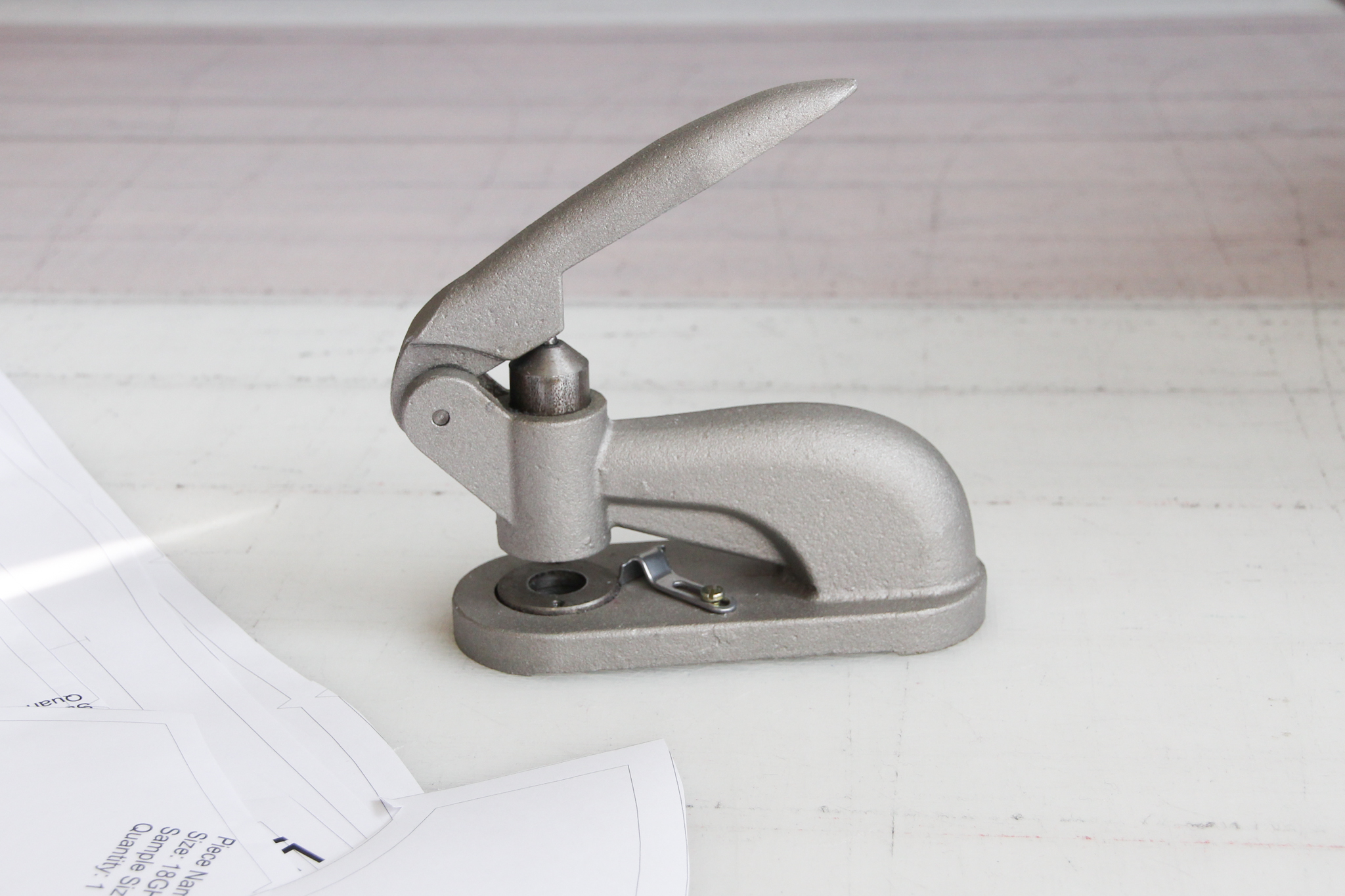
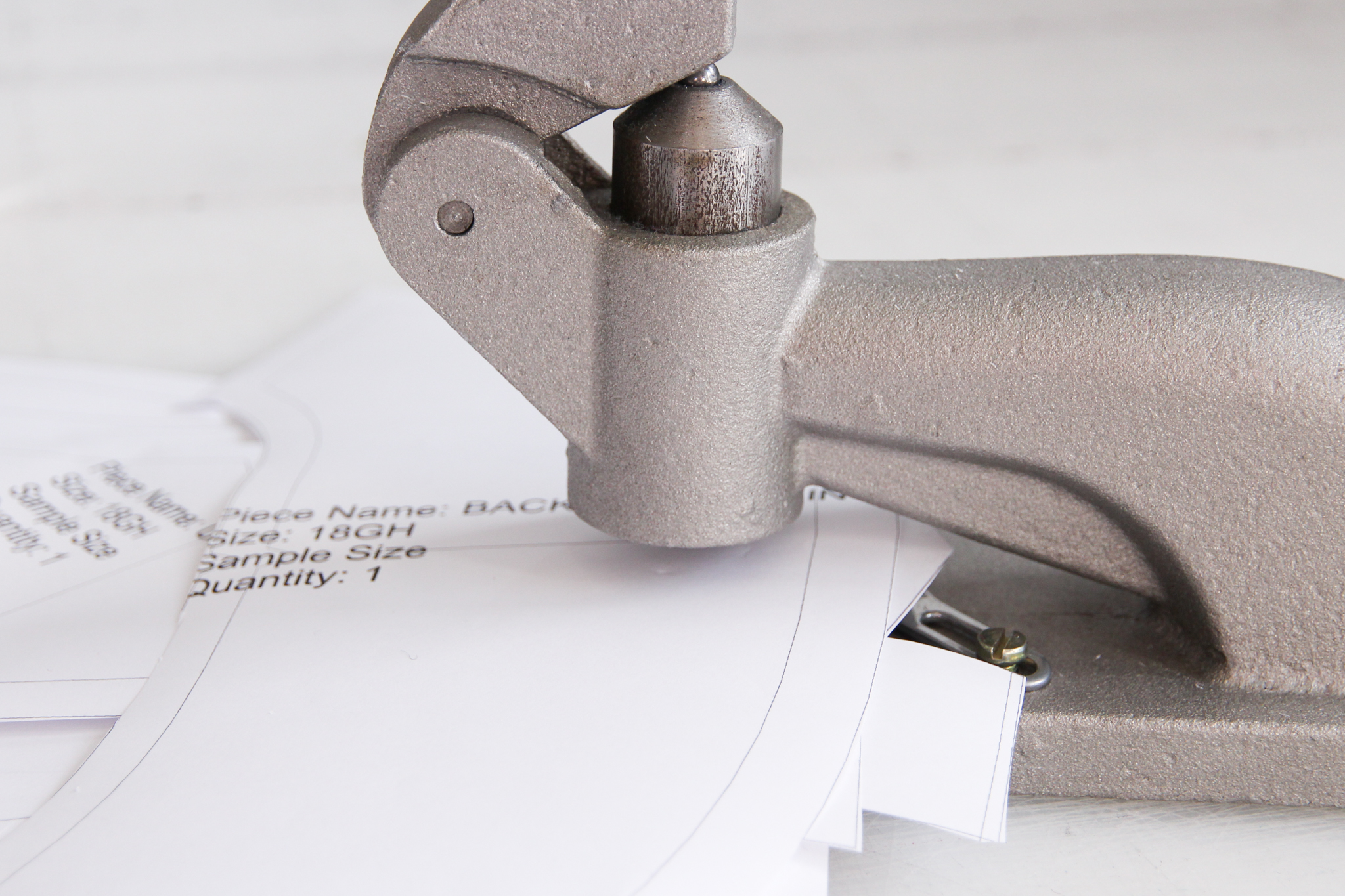
Pattern hooks are not too pricey and fairly easy to find online. You can pick some up for less than a dollar each by searching “pattern hooks” on Amazon.
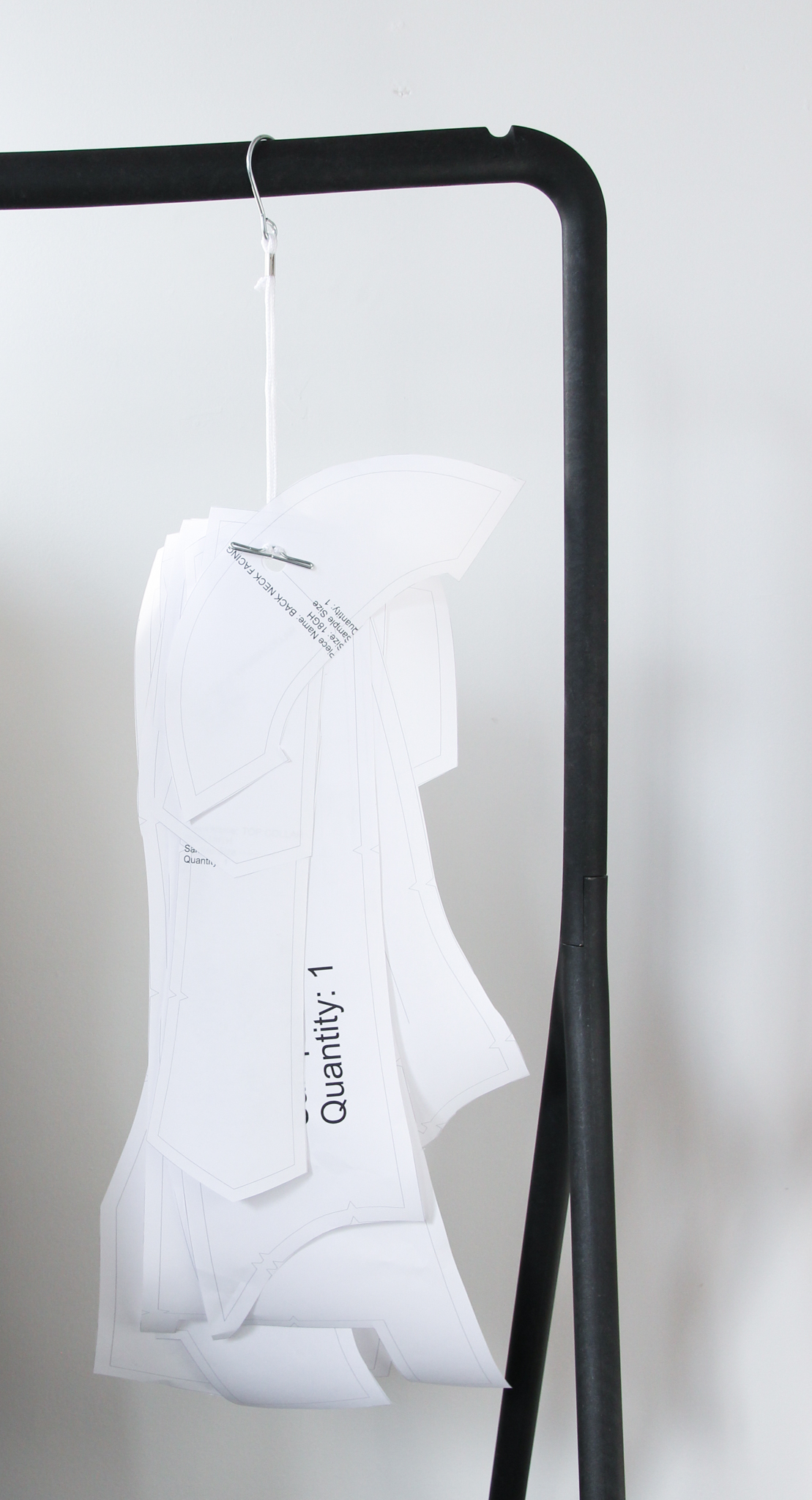
And that’s all there is to it! This system doesn’t take much time to set up, but you do need to have a spare clothes rack available.
How Carrie Stores Her Patterns
Carrie, the overachiever that she is, has the most sophisticated method of the three of us. (That level of organization is why she makes such a great team member! Plus she brings us donuts.)
Here’s how her system works:
Carrie uses a set of binders that are categorized by garment and fabric type. Inside each binder, she has a clear sleeve for each pattern. Once she’s printed out her PDF pattern, she folds up the pieces and stores it in the clear sleeve along with the instructions. This allows her to flip through her patterns very easily, while keeping them tidily out of sight when she’s not using them.
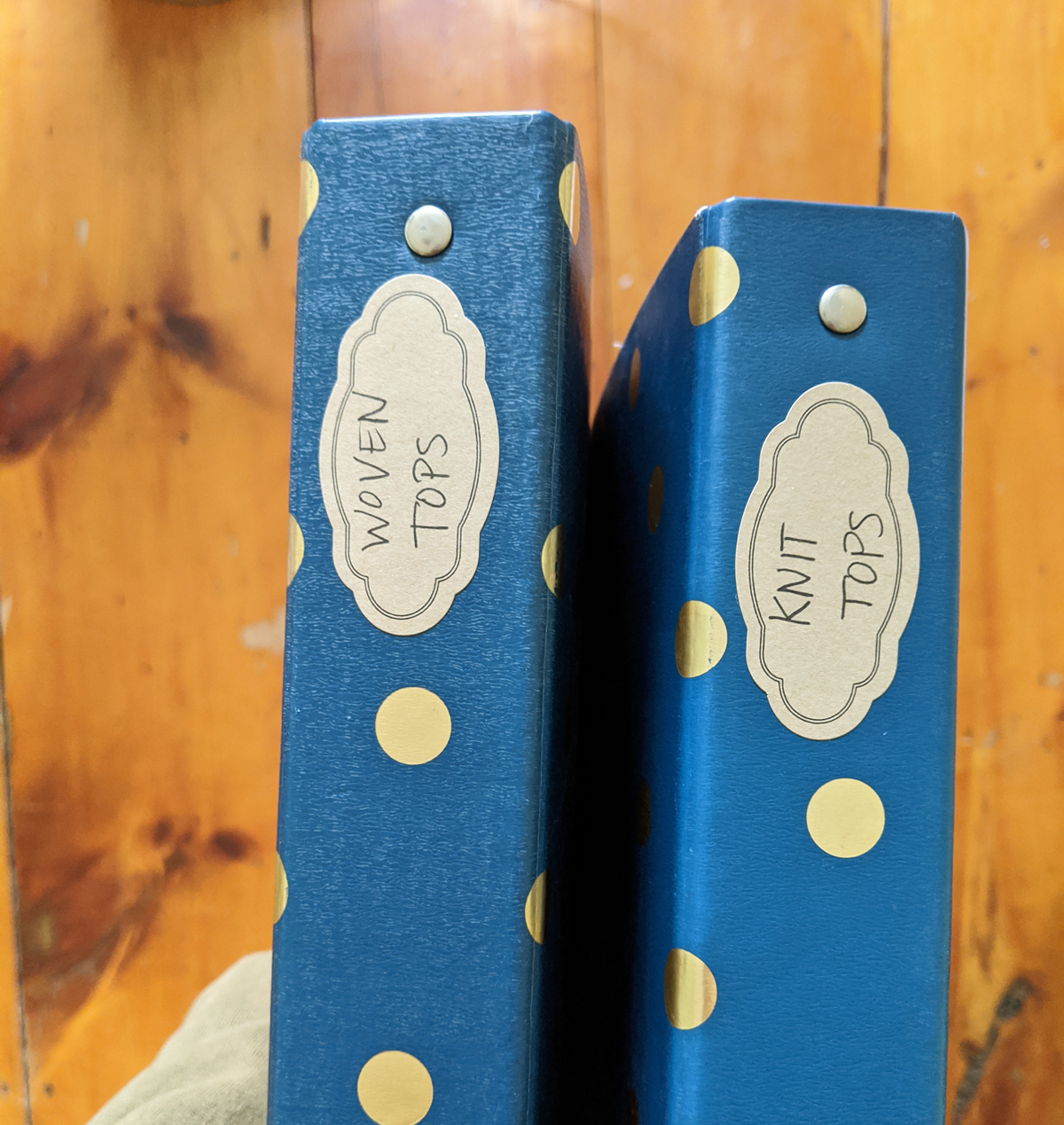
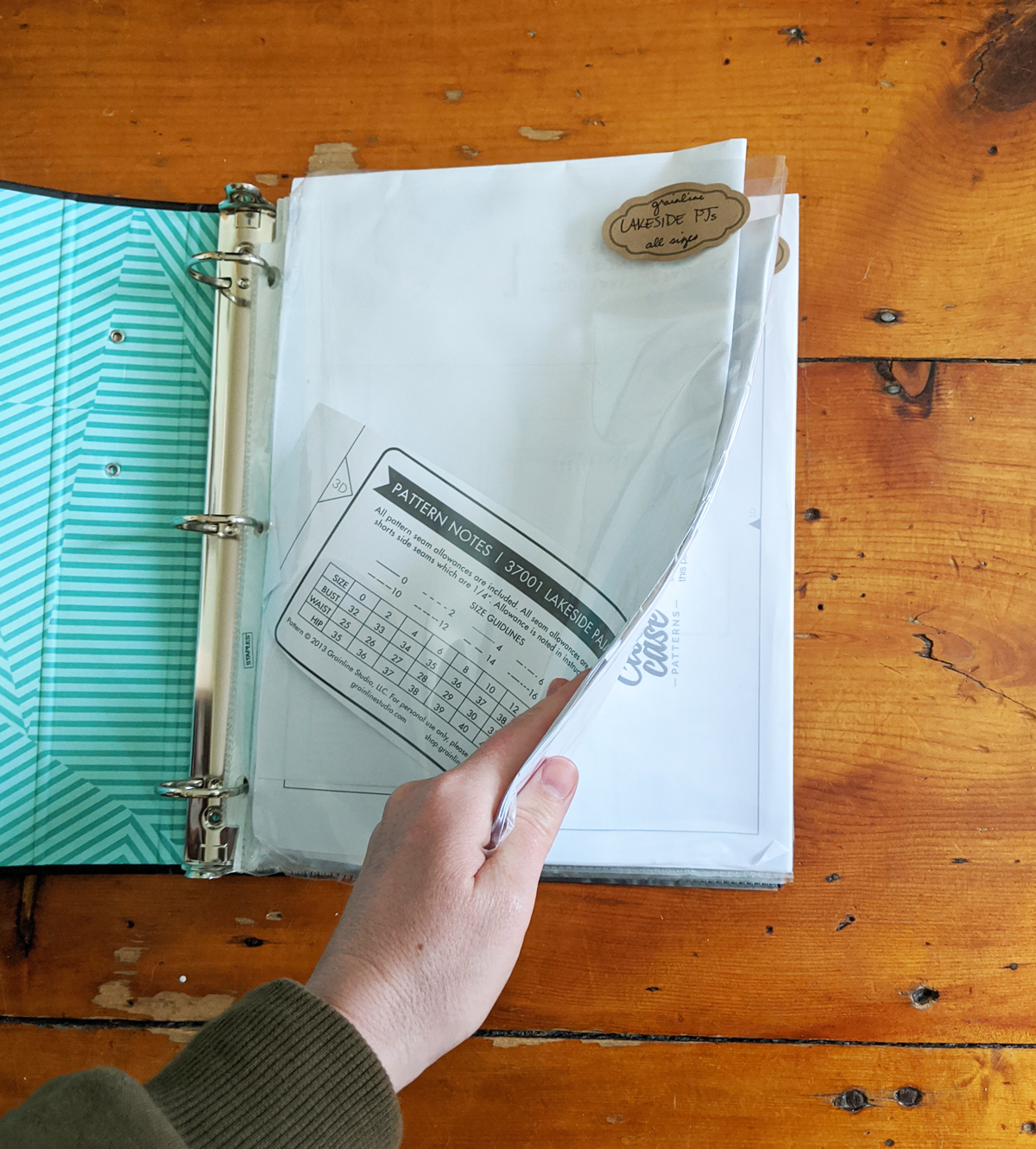
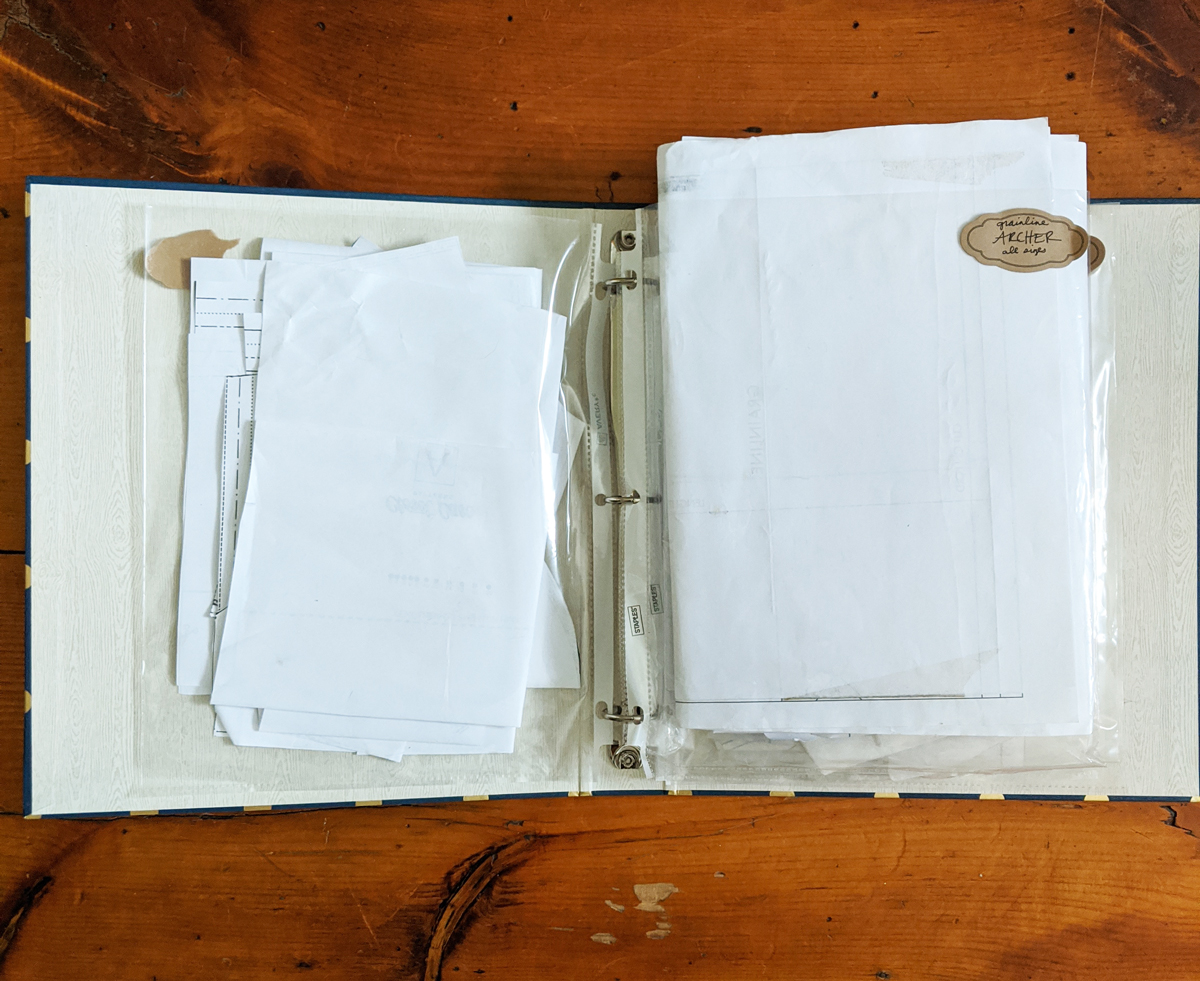
How Ayelet Stores Her Patterns
That’s me! Here’s how I store my patterns:
In a corner of my sewing room near my printer and filing cabinet, I have bin for all of the patterns I’ve used. I store each pattern it its own manilla folder, and label it on the outside with the pattern name and the pattern company. Inside each folder, I keep the printed instructions as well as the pattern pieces cut out and folded up (not so neatly, I must admit).
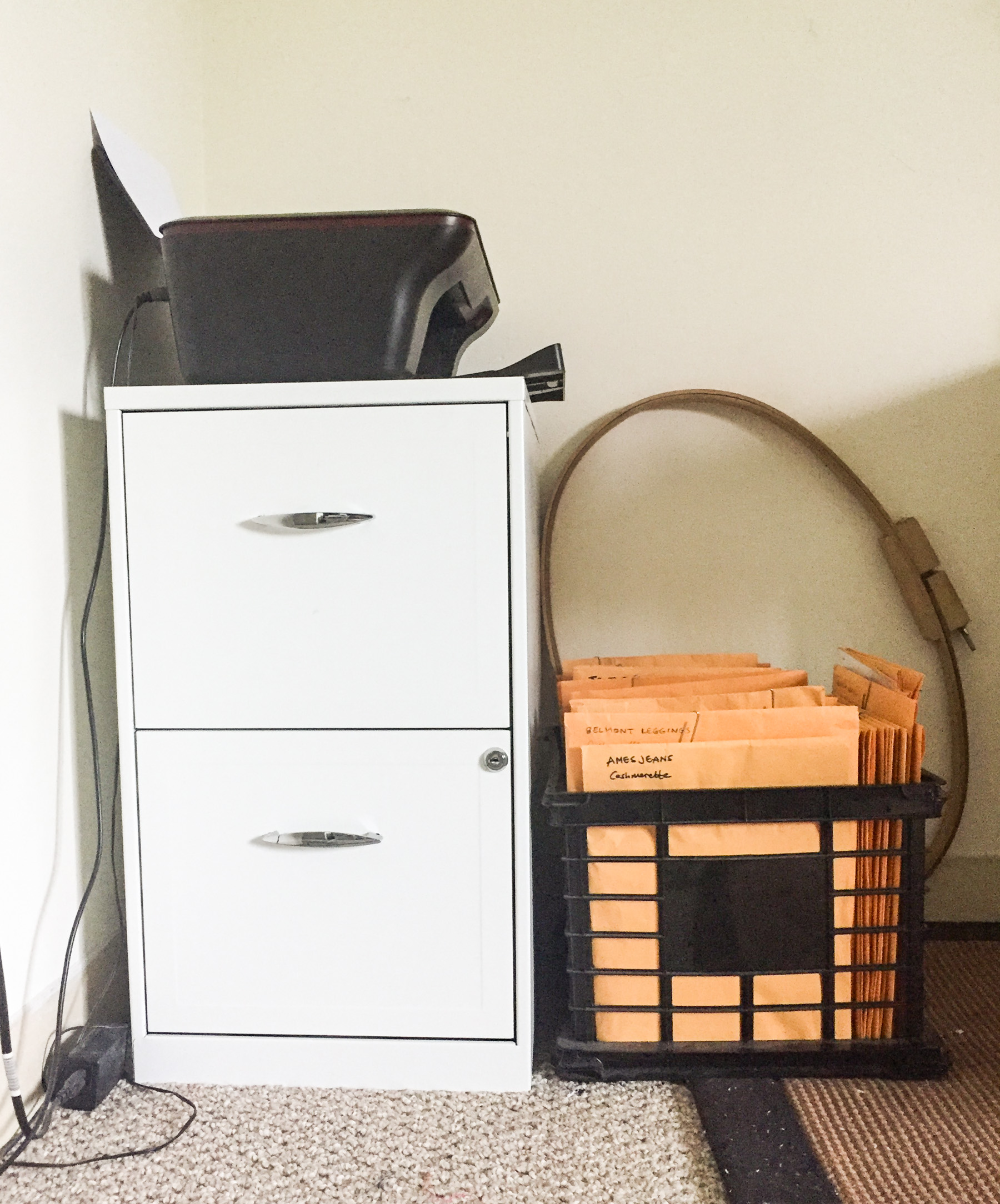
(The filing cabinet does not have sewing patterns in it, just boring adulting things.)
I keep the patterns I use most (my Cashmerette patterns, of course) organized alphabetically near the front, with the rest of the patterns behind. Lingerie, menswear, baby, and other patterns I tuck into the overflow area on the right side of the bin.
I store both PDF and printed patterns in the same way in this bin, with all of my unused printed and PDF patterns stored in a different bin in another corner of my sewing space.
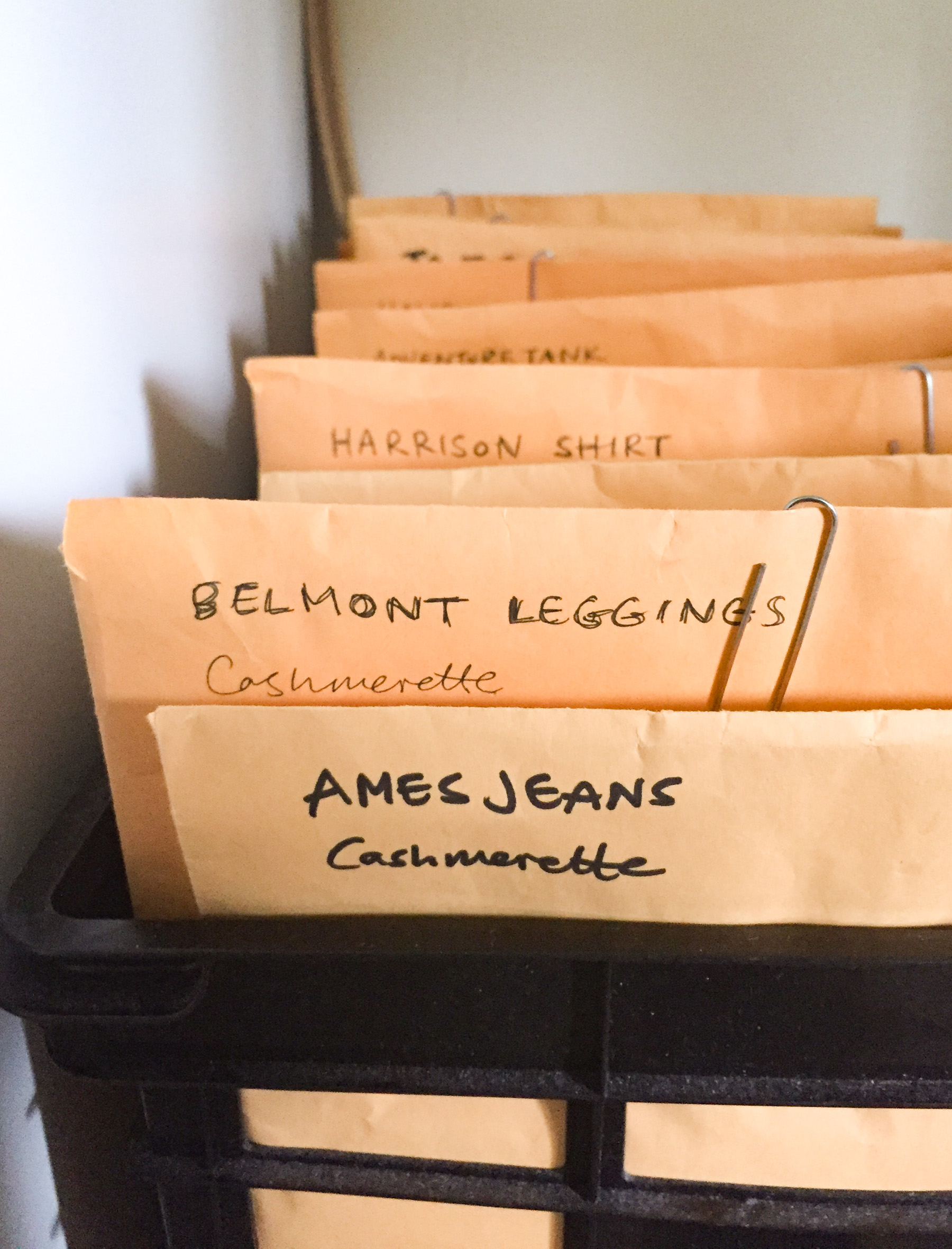
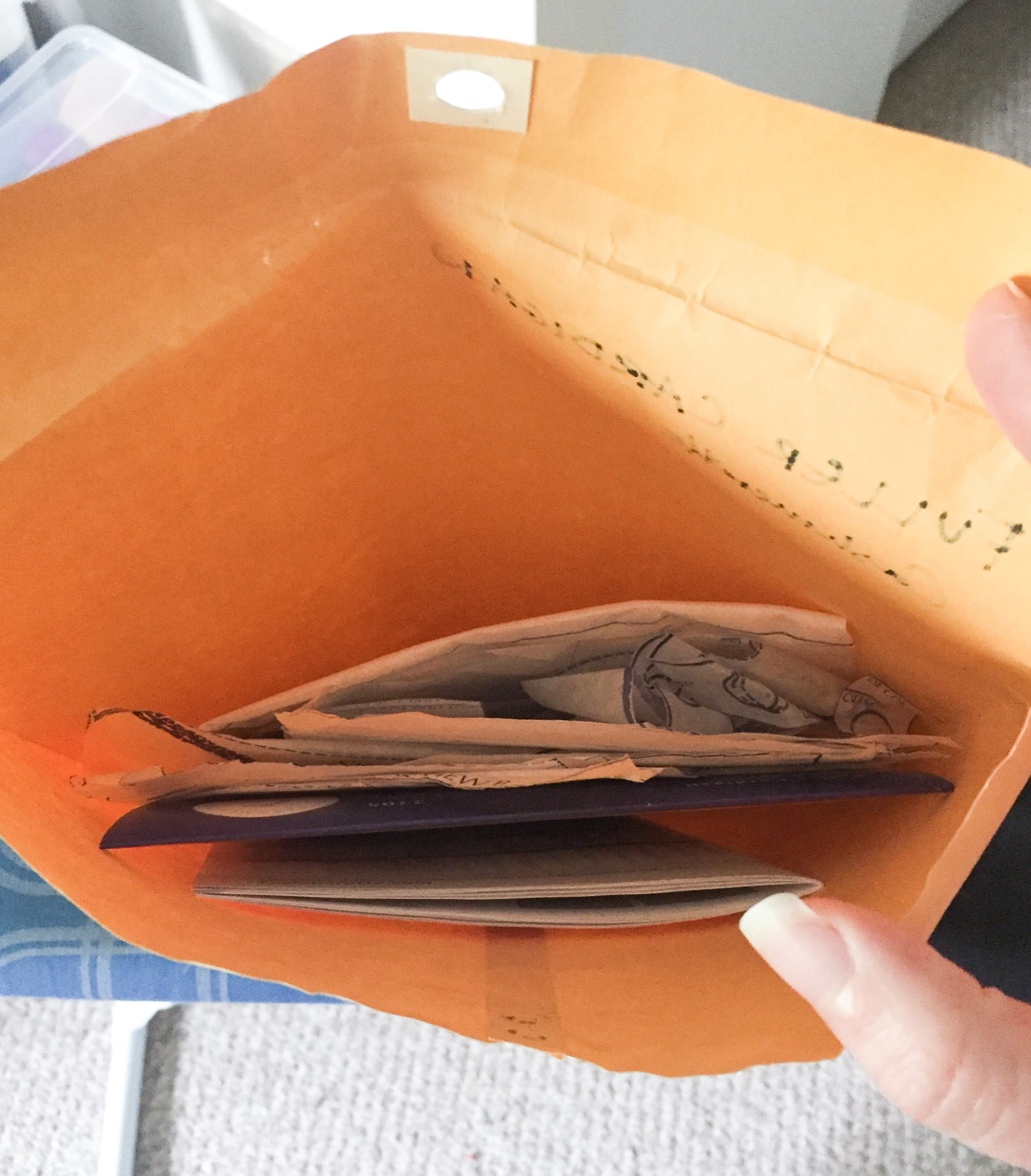
As you can see, this system is already starting to reach its limits in this one bin. I think it’s time to get myself another bin!

Other PDF Pattern Storage Ideas
Those are our three preferred methods, but there are so many more ways you can do it! Here are a few other ways of storing PDF patterns that we like:
- Jennifer at Sewing is Required prefers to roll up her printed patterns and secure with a label bearing the pattern name.
- Our friends at Colette recommend hanging pattern pieces pants hangers or binder clips. The great thing about hanging your patterns is you don’t have to iron them out to flatten them the next time you want to use them.
- Over at Do It Better Yourself Club, they’re also fans of the manilla envelope method, but they take it up a notch by taping the pattern cover to the front and the measurements charts to the back. So smart!
- The Foldline has a free library card-like divider to help you organize all of you patterns.
- Check out Jasika Nicole’s filing cabinet filled with a treasure-trove of patterns.
- Katja at With My Hand Dream likes to use folders with expandable pockets to store her pattern iterations.
- Helen of Helen’s Closet uses a website called Trello to keep track of all of her PDF patterns. This also lets her browse her pattern stash from the fabric shop. Genius!
How do you like to store your PDF patterns? Let us about it in the comments below—we’d love to expand this list with many more methods!

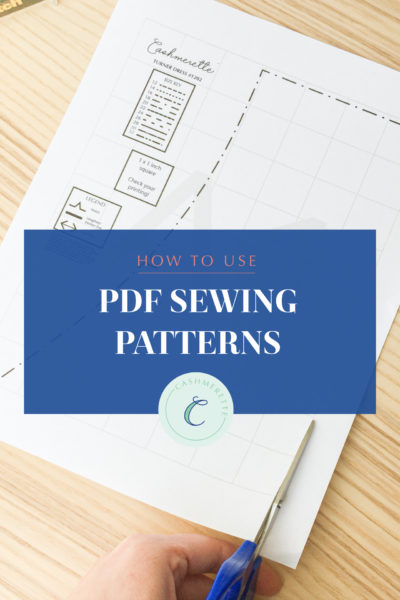
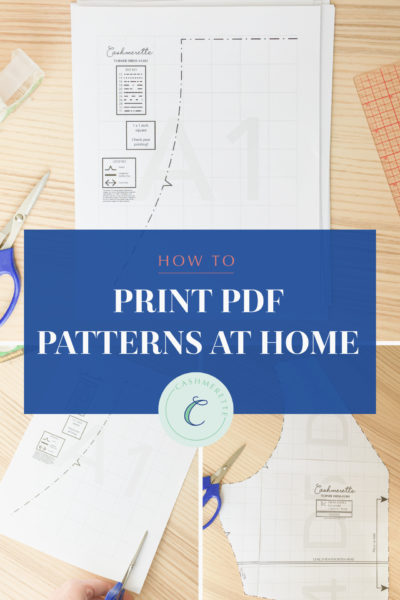
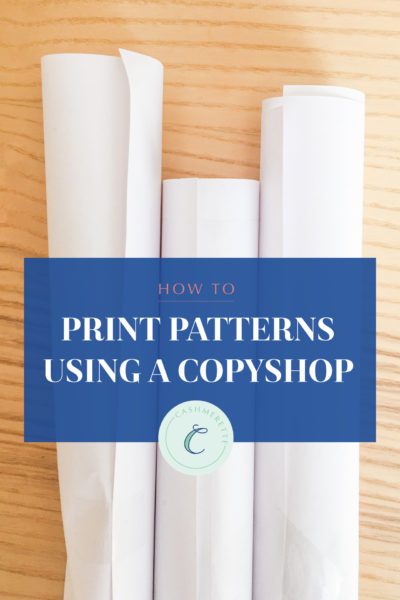

I use the manilla envelope method with a pattern picture on the front as I don’t always remember pattern names. It also allows me to place a piece of the fabric that I made it out of inside and a place to write date and name on th back if I made it for someone else.
I use boxes with lids that are made for hanging files to store all my patterns. I have them organized by type (dress, top, pants, etc) with the name of the pattern and the pattern company on the tab. I have also used an online database (airtable.com) to create a database of all of my patterns with links to the pattern website, pictures, size charts, yardage information and notions needed. I have categories set up so I can search for patterns by type (again, tops, dresses etc.), by pattern company, or even by fabric type (woven, knit, etc). The BEST thing is, I can use an app on my phone to access this database wherever I am, so if I’m in a fabric store and see a gorgeous fabric, I can pull out my phone and look at all of my patterns, find the one I think would be great with that fabric, and look to see how much yardage I need! It has been amazing.
I’ve done the manilla envelope method for years. I often make the same pattern in different sizes (for me, my daughter or nieces, or as a gift to a friend) so I may have several traced versions. I paperclip all of the pieces for one size together and put that in the envelope with original pieces and instructions.
I started out using manila envelopes but have found that I prefer to use clear plastic envelopes that open from the side. I started with writing the pattern info on the envelope but wanted to see the pattern so I started copying the pattern and attaching it to the envelope. What I like about the clear plastic envelopes is that no labeling is necessary–I can see which pattern is in each envelope without doing anything more than putting the pattern in the envelope. Different colors come in each packet so if you wanted to color coordinate your patterns, that could be an option.
Like Rhonda, I use clear plastic envelopes. Mine are all clear, not colored and they open from the top, but like Rhonda, I favor this storage system because I can see what’s inside without labeling.
Sewists really need a ravelry of some sort to keep track pdf patterns and fabrics and allow browsing of all designers patterns all at once
Revelry have been working with ‘Textillia’ to develop a similar platform. To me it seems a bit incomplete and not as intuitive as Revelry.. but at least someone is trying..
I use PatternReview.com stash for keeping track of my patterns- their database is pretty good. I have just started to use their fabric stash to see if its better than my Excel spreadsheet.
I store mine folded in clear zip lock bags.Picture on the outside. Hole punched in the top above the zip lock. Piece of string looped around and hung from a wire twisted around a pole attached to the wall behind the door. I can see which one I want to use and the dead space behind the door is usable space
I always print mine A0 size and then trace so I have a box with the rolled up master copies, each with the pattern name on the edge so I can find them without unrolling. The traced pieces are put in big ziplock bags (thanks ikea!), labeled and put in a drawer in my sewing room.
I have lots of patterns so I use a combination of the Do It Better Yourself Club manila envelope approach coupled with three ring binders. I copy the cover of the pattern envelope, preferably in color (I have my own copier) and tape it on the front of the manila envelope. I tape a copy of the back of the pattern envelope on the back of the manila envelope. The pattern pieces are stored inside the manila envelope. The manila envelope is filed in a file cabinet arranged first by pattern company and then by pattern number or pattern name so I can find it easily. The original pattern envelope is placed in a plastic page protector that fits in a three ring binder. Each page protector will hold two pattern envelopes. I have several binders, individually labeled for dresses, tops, pants, coats/jackets and ensembles. I can search the binders (sort of like a pattern catalog) and then find the pattern I want in the appropriate file drawer. Very similar to finding a pattern in the fabric stores.
LOVE this idea. The catalog idea works so well for retail that it seems a brilliant idea for home as well. It seems like a great way to be able to browse my patterns without having to haul them out to do it. Thanks!
Thank you for this informative post. I make handbags and found a cart by Totally Tiffany that is two layer and I store my pattern pieces in job ticket plastic folders and the patterns that I have in binders also fit on the lower shelves and there is also an awesome aprom that has pockets that can also hold patterns. I will post photo.
I use plastic report covers, the kind with a pocket inside. The pattern goes into an envelope and is stored in the pocket, ideally with a picture of the finished item on the envelope. The instructions are placed in clear paper sleeves and placed in the report cover. I write the type of pattern on the front of the report cover with a marker. If I have several of the same type of pattern, child’s shorts for example, they can be placed in the same cover.
I’m a little late to this conversation but I’ve found a method that works for me. I collect my grandchildren’s clothing hangers (the ones they give away from the retail stores) and clip my pattern pieces to them. I can then hang them in a closet or on a rack I hope to get soon. Now I just need some of those dividers that go on or over the rod.
I purchased the pattern hooks and I love them for storing my patterns. I hang them on a rod behind my door in my sewing room. I will never go back to rolling the patterns again. Thanks for the info Jenny! I want one of those rabbit punches next!
I roll my patterns up and put them through the holes in a couple of wall-mounted VARIERA plastic bag holders from IKEA. I just roll the pattern pieces up so the pattern name shows (or write the name on the edge that shows), and then slide the rolled-up pattern through one set of side holes. The way the holes are configured, I can put two pattern rolls on each level, and there are 7 levels in each one — that’s a lot of patterns up and out of the way for $3!
Whatever fits in the original pattern envelope is put back in that and goes in a banker’s box with other crafting paperwork.
For larger than that I have a long underbed box from the container store. Almost everything can lie flat. One fold for the rest. Pieces from one pattern are clipped together. There are also some Ziplock 2 Gallon bags with crafting things that don’t work in my paper storage system.
Ziplock 2 Gallon bags are the key to my craftwork organizing. I also knit, crochet, quilt and do some embroidery. Sigh.